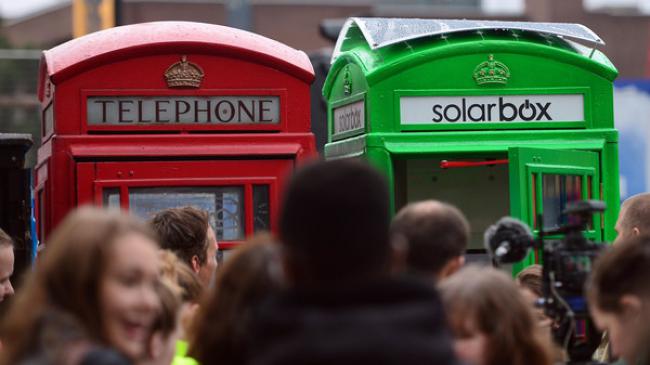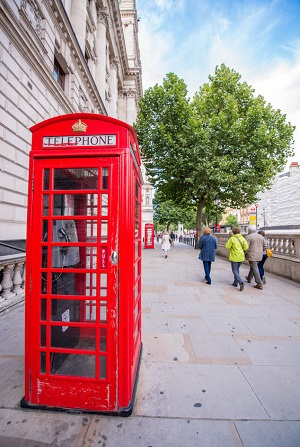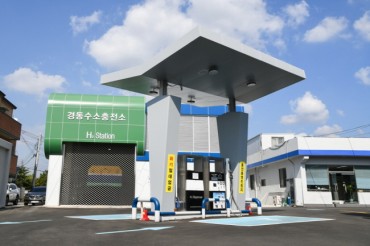
London has transformed its red telephone booths into green ones and named Solarboxes to repurpose them. (image: AFP/Google)
SEOUL, Oct. 7 (Korea Bizwire) — Phone booths were once loved from all walks of life but now have become relics of the past as almost all the people around the world have their own gizmos to connect with each other instantly. Local governments, telecommunications companies and even young people with novel ideas, therefore, put forth their best effort to revitalize the almost obsolete booths into a more useful infrastructure.
According to The New York Times on October 3, London has transformed its red telephone booths into green ones and named Solarboxes to repurpose them. Kirsty Kenney and Harold Craston, two geography graduates from the London School of Economics, have revamped “decommissioned telephone booths into charging stations for mobile devices.”
The U.S. daily newspaper reported that the service is free of charge as “the power comes from a 33-inch solar panel on the roof, and other costs are covered by advertising displayed on the screen inside while a device is charging.” As it is expected to work as convenient chargers for citizens’ smart devices, the refurbished booths on London streets seem to relieve gadget users’ “charging anxiety” that most smartphone users experience when their phones run out of power.
In other countries, public phone booths have gotten new life as a Wi-Fi hotspot. The Guardian reported on September 30 that Telstra, Australia’s leading telecommunications company, recently rehabilitated its forgotten phone booths into Wi-Fi hotspots for Telstra customers to enjoy Internet access in public spaces. Those phone booths “are ideal hotspot sites because most are located in busy areas and connected to high-speed fiber cabling.”

Phone booths were once loved from all walks of life but now have become relics of the past. (image: Kobizmedia/Korea Bizwire)
According to the news outlet, 1,000 hotspots are planned to be operational by this Christmas, and “the trial will include busy spots such as Bondi Beach in Sydney, Bourke Street mall in Melbourne and Rundle Mall in Adelaide.”
The scheme to repurpose phone booths as a Wi-Fi hotspot has already been carried out in New York in the middle of 2012. According to the New York City government, the city planned to offer New Yorkers free Wi-Fi services at public phone booths. The plan was not to replace the pay phones but to give an additional function to the booths.
South Korea is no exception to the trend. KT, a Korean telecom corporation, has utilized unused phone booths as an emergency protection spot since the end of 2013. When you are followed by someone and don’t know what to do, for example, you can go into a nearby phone booth. As soon as you enter into it, the door is locked and an emergency bell rings. Inside the booth, a police hotline is available.
When it is not in emergency, the booth can also be used as an unmanned tourist information kiosk. Tourists from around the world can visit the booth to get information on Korea’s attractions. As the spots are expected to keep people in danger from assault, the telecommunications company plans to phase in the scheme.
In Busan, South Korea’s second largest city, a small community has transformed five idle public phone booths into five small unmanned libraries last year. Once-used-to-be-booth libraries are nestled within Buheung Park in Busan filled with 500 books donated by adjacent libraries and Busan citizens. People living in Busan who want to read books under the trees are always welcomed to visit the booths.
By Veronica Huh (veronicah@koreabizwire.com)







Pingback: UK's red phone booth converted into phone chargers? | Solar Equipment World